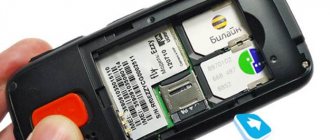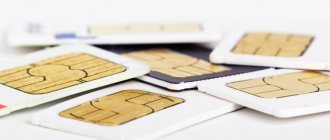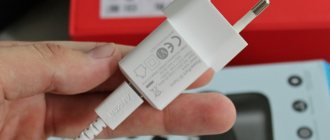Hello! Your laptop doesn't see Wi-Fi? It's OK! The owner of a cool laptop himself, and this also happens. Today I’ll tell you why this happens and how everything can be quickly corrected. Nothing will be difficult!
But if suddenly you have not solved your problem, or something remains unclear, describe your situation in great detail in the comments to this article, and I will try to help quickly.
Let's go over the main reasons and look at ways to correct the error.
Causes
Honestly, there can be a lot of reasons. It is very difficult to identify the exact cause remotely, so if you write your case in the comments, write in great detail. Try to find something in the text below that is close to your case and try to fix it - it definitely won’t get any worse.
Universal advice! If you don’t know what to do, immediately reboot your router and laptop. In 99% of all cases, problems will be successfully resolved.
And here is my list of TOP problems:
- Something has gone wrong somewhere and cannot be diagnosed. It can be cured by the aforementioned reboot.
- There is no network itself.
- The adapter is turned off.
- Airplane mode.
- The driver crashed or was not installed.
- Problems with the router.
- Breaking
With the first point we seem to have figured everything out, let’s move on to the nuances for each next one. If this definitely doesn’t suit you, feel free to skip it.
Wi-Fi adapter is disabled
Did you know that you can simply turn off Wi-Fi on a laptop? Well, turn it on accordingly. First, let's see what's in your tray!
Examples are given for Windows 10. On Windows 7 and other models everything will be approximately the same.
If you have something like this - and it says “No connections available” - then most likely Wi-Fi is simply turned off. You can enable it in several ways - through buttons and through settings. Let's briefly look at each method.
Power buttons
Previously, separate switches or even buttons were allocated to turn on Wi-Fi on a laptop. Now all this is usually turned on by the key combination Fn + F [1-9]. Example below:
On my ASUS laptop it is turned on by pressing Fn + F2 as in the picture above. Take a closer look at your function keys, find the icon for your model and try to turn it on. Inclusion is not the topic of this article, I will cut a lot. If you have questions, leave them in the comments.
Did it help? Great. It didn’t help – we move on.
Enabling in the quick panel
Especially for the “ten”. Users of other operating systems may skip. Here's the status for this:
Click on notifications and select Network:
Next, click on Wi-Fi and everything turns on:
Enabling the adapter
Another option. The adapter will work, but is just not currently turned on. A universal method for all systems. Let's do it step by step:
- Right-click on our network connection and select “Network and Sharing Center” (Windows 7) or “Network and Internet Settings” (Windows 10):
- Next, go to the adapter settings (on the seven in the left column - Change adapter settings)
- In the window that opens, find your wireless adapter (there may also be wired adapters here that we don’t need, but if you wish, you can enable them too), right-click on it and select “Enable”:
Everything should work!
WiFi is not visible on the laptop due to home router settings
Finally, the third group of reasons is when the laptop does not see wifi from the home router, but other networks are visible. First of all, this applies to such a setting when the SSID is forced to be hidden for security purposes, so that strangers cannot guess the password and connect to the Internet through your router.
To make wifi visible, you need to go to the router’s control panel and uncheck the corresponding item.
Or, through the Windows Internet connection menu, go to the “Hidden Network”
And enter the name of your WiFi and password to connect to the network
Auto diagnostics
It’s a cool thing if you don’t know how to figure it out, but it’s not suitable for all cases. You can have the computer try to solve the problem itself. As in the last section, we get to “Network and Internet settings”, and then select “Troubleshooting”:
The operating system will think something, try to offer you advice... and Wi-Fi will work!
Well, or it won’t work) For me it’s easier to turn everything on manually. But it can be used to diagnose the cause. The same is true for Windows 7.
Driver
Often there is no driver in the system - either it was not there before, or it was lost due to some action, or maybe it’s just a new card. First you need to check its condition, and therefore install it - so as not to do unnecessary things.
Right-click on the Start button and select “Device Manager”:
We look for the “Network Adapters” tab, and there we try to find our wireless adapter. As a rule, it contains the word Wireless in its name:
In my case, everything is fine with him. But it happens that instead of a beautiful blue icon there is some kind of exclamation mark, or even worse - the adapter is not in the devices at all. In general, if there is any problem, it is easier to change the driver. I won’t refer you to the manufacturer’s website, as some other publications do, the easiest way is to use the Driver Pack Solution program:
drp. su – go and download
The program itself will find problems in the equipment, outdated drivers and try to fix everything. Now, in my opinion, this is the best free solution for such minor problems as installing a Wi-Fi driver.
Disabling access due to hardware failure
Equipment malfunctions when working with wireless connections are divided into two types:
- software;
- hardware.
Why doesn't my Windows 10 laptop find Wi-Fi networks?
Hardware faults are characterized by physical breakdown of network equipment. This means that their module has failed. Accompanied by a complete absence of available connections in the list. The model can burn out from high temperatures, as it requires high-quality ventilation and cooling. Or break as a result of a strong impact and other factors.
Its failure will be indicated by the inability to find it in the “Device Manager”. In addition, it is recommended to diagnose the system; most likely, an error will also be indicated there. There is only one fix method in a particular case - repair or replacement of network equipment.
In the first case, you can fix the problem if the OS has the System Restore function activated. By going to the option, you can see the available restore points. And the user has the opportunity to return the version of Windows that functioned normally and was able to connect to Wi-Fi.
Note! According to user reviews on specialized forums and websites, quite often the equipment cannot find the network after installing the next update. In this case, you have to wait for the developers to fix the error or personally reinstall programs and drivers for wireless connections.
Problems with the router
It is impossible to analyze all possible problems that could affect the visibility of the network - there are a lot of router models. I also don’t see the point in trying to show something in between. I will list the main thoughts about problems on the router in the topic of our article, and if you really need to configure something, use the search on our website, find your router model and do everything as written.
I give screenshots from my model from TP- Link. In other models everything is about the same.
Channel
The channel must be in the Auto position. Experts can set something else, but there is a possibility of getting into the wrong channel, and the network will not be visible.
SSID and Visibility
Sometimes the laptop just doesn't like the network's SSID - that's its name. Just change it and everything will work as it should. Another option is that someone made it invisible to everyone (and this is possible) - here it is enough to set visibility for everyone.
Video tips for the user
This video talks about some of the reasons why a laptop does not see wireless networks, and also presents ways to solve such problems:
If such a situation takes you by surprise, do not panic, because there are quite a lot of methods to fix the problem, and before going to the service center, you should try all the methods so that in the absence of a serious threat you do not waste money and time while diagnostics are carried out laptop operation.
Previous Post Dragonblood Vulnerability Disclosed in WPA3 WiFi Standard
Next entry MikroTik RB2011UiAS-RM Router: characteristics, performance, price, reviews
Breaking
If none of the above helps, then there is the possibility that our adapter has died. If you don’t understand it yourself, it’s better to contact specialists who will make a final diagnosis. This is easy to check - connect an external Wi-Fi adapter or an internal card. What’s cool is that Wi-Fi on laptops is easy to replace, which means repairs won’t cost as much as in the case of a processor or video card failure. And it happens that it’s even simpler - for example, the cable has become unsoldered. This can be easily fixed in a day.
That's all! I hope I helped you solve the problem and force your laptop to search for the wireless networks of all its neighbors. If you have any questions, feel free to write in the comments. We will decide on an individual basis! Have a nice day, everyone.
No network after cleaning
Also, sometimes you may find that the laptop has stopped seeing the Internet after cleaning the dust from inside. If this happens, then you probably accidentally turned off the wireless module or disconnected the wires somewhere during the cleaning process. In this case, the laptop does not even search for the network. To fix the problem, you will need to reconnect the adapter, and if this does not help, replace it with a new one.











